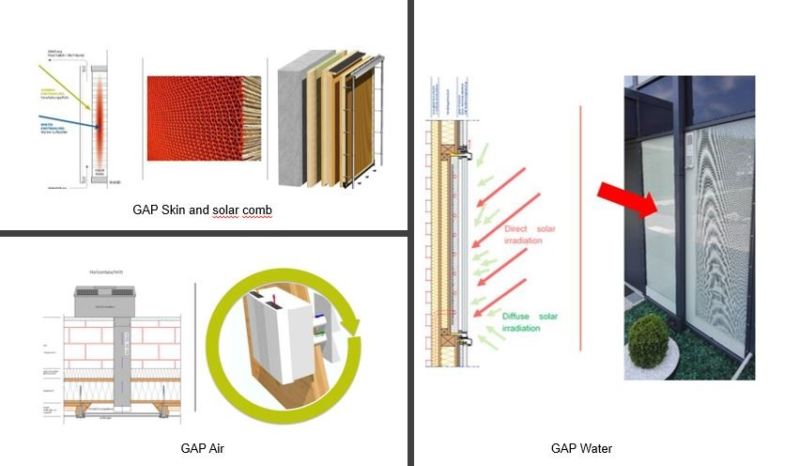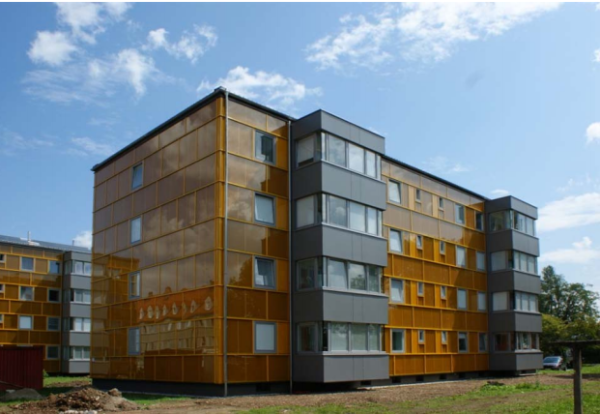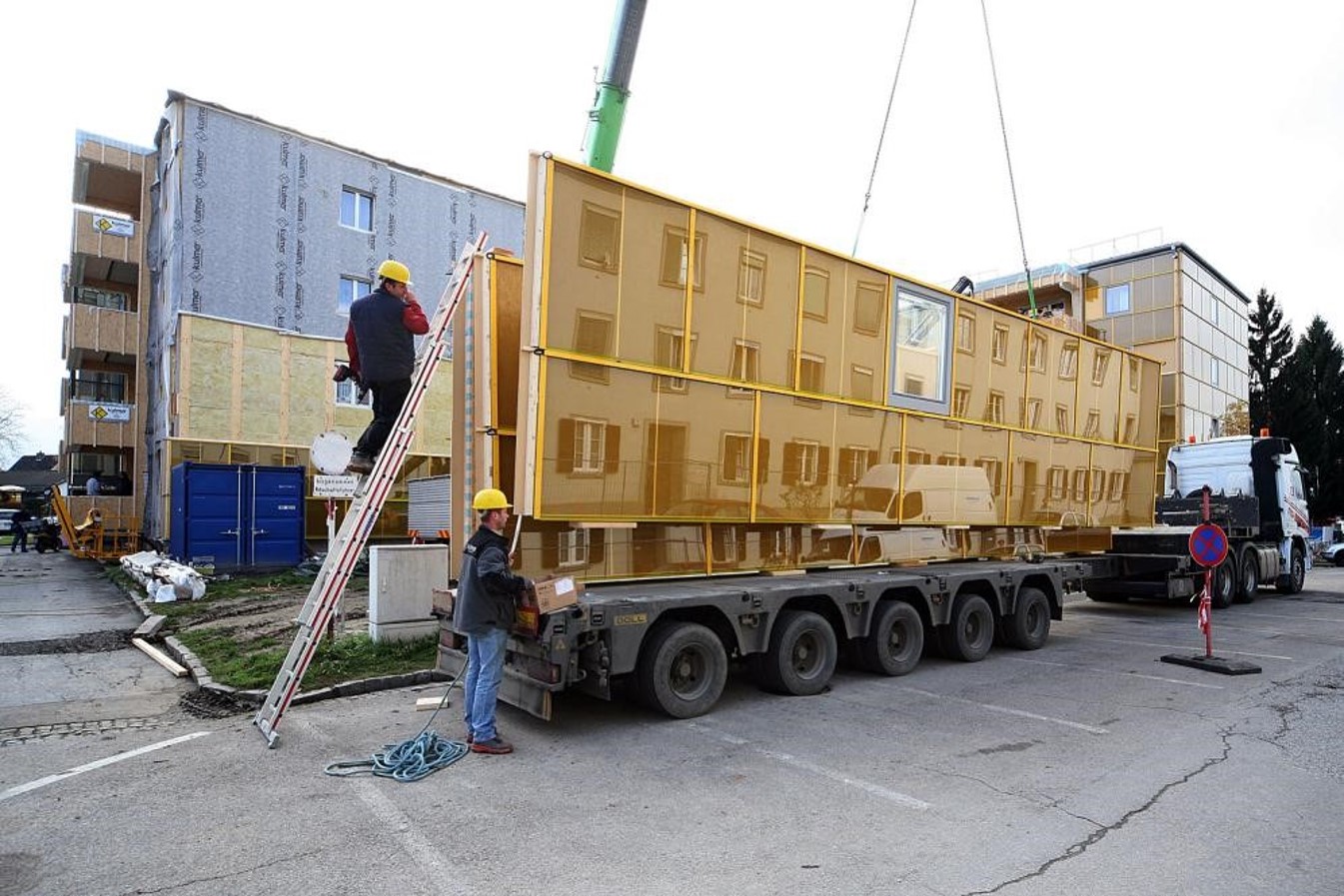Graz district
Building Characteristics
Type
Appartement BlockConstruction year
1970Ground floor area
1589 m² after renovationBuilding Owner
Social HousingBuilding Manager
N/ARefurbishment package
GAP Solutions>
The GAP solutions is a complete solution developed around three core business, GAP Engineering, Gap systems and GAP Services.
GAP1 engineering
GAP1 engineering stands for close collaboration of architects, planners and executors as well as for the careful coordination of building-physical and energetic conditions. GAP engineers are the competent interlocutors that accompanies the client through all realization phases, from conception to implementation. This combination ensures integrated processes and smooth work flows. Based on a comprehensive collection of facts, an energy-optimized construction and management concept are developed in order to be implemented precisely and efficiently. In doing so, solid craftsmanship is combined with industrial production and the special GAP system.
GAP2 Systems
The intelligent GAP facade solutions practically don’t allow any heat loss – the interaction of light, wood and air eliminate thermal bridges and increases the hygrothermal and acoustic comfort. The GAP system has been developed in collaboration with leading universities and research institutions and extensively tested.
The optimized house envelope also allows for optimization of the house technology. Simple and decentralized systems are cost effective in investment and maintenance. The coordinated complete system consisting of facade and building technology sets economical and ecological standards. Based on the interaction of the components, GAP2 systems focuses on sustainability and renewable energy.
- GAP Skin
The building is enclosed by a tempered air cushion – This buffer zone is a climate regulator and ensures a pleasant room climate during all seasons.
First grade materials ensure long-term quality. GAP glass facades are durable and weatherproof, allowing a drastical reduction of maintenance and operating costs. The evenly warm facade, which is also open to vapour diffusion, ensures mould-free rooms and balances out thermal faults in the building envelope. It is composed as follows:
- Wood construction + insulating material : ≥ 60 mm
- Framework wall in solid wood+ insulating material : 151 mm
- Wood panel (DFP): 19 mm
- GAP-Honeycomb panel in cellulose. 30 mm
- Air gap (slightly ventilated): 29 mm
- ESG float glass panel: 6 mm
- Attaching parts in aluminium
- GAP Air
GAP Air is a decentralized ventilmation system based on heat recovery. The ventilation element is embedded in the facade; customized object solutions are also provided. The cost benefit compared with central systems is up to 60% depending on the construction. Independent of central building technology, hygienic and easy to service, they require no regulation expenditure.
- GAP water
Based on individual project requirements, GAP:water offers customized solutions for hot-water generation and heat recovery. The main principle is the prevention of energy loss. The supply is provided by the facade, at maximum decentralization. GAP:water uses existing waste water heat and focuses on eliminating long lines resulting in heat loss. Based on individual requirements, concrete storage absorbers, loss-free hot-water distribution, heat recovery and photovoltaic are combined.
Maintenance-free and requires no regulation expenditure.
GAP3 Services
Finally, the implementation of the solutions, including installation – and throughout the entire utilization cycle is ensured. Production, machines and installation are provided. Industrial production and installations guarantee efficiency, precision and safety of systems and operations.
Source ©GAP Solutions GmbH
Performance Before

Performance After

Description
The renovation of the Dieselweg residential area, located in the south of Graz (Austria) was supported by the Austrian system of public housing aid, by additional research funds and by a special support of the governor of environmental affairs of Styria and by the non-profit organization of the GIWOG corporation.
Due to the fact that since the time of construction (1960s) no improvement measures have been carried out, the building stock showed a very energy inefficient and poor situation, with high heating costs and low quality thermal comfort and living.
At this showcase project for the high-performance renovation of a large-volume residential building, the passive house standard was achieved and the heating costs significantly decreased. CO2 emissions were also reduced by the use of renewable energy sources, e.g. solar thermal energy. Prefabricated large-scale façade modules with integrated windows and ventilation systems were used. In this way, an essential increase of the thermal and user comfort was achieved and the indoor environment was improved.
List of stakeholders
Local climate, constraints, regulations and incentives
Location
Dieselweg 4, 84041 Graz, AustriaClimate
Western- Climate: Western
- Heating Degree Days: 3 500 K.d
- Local constraints: Due to poor structural condition and energy performance the heating costs were high and the thermal comfort and living quality were low. But the most challenging circumstance was the fact that it was considered to be impossible to resettle the tenants during constructions works.
- Incentives: € 7.3 Mio. GIWOG Gemeinnützige Industriewohnungs AG (including subsidies from the Styrian Government); € 1.0 Mio. funding by Federal Government of Austria; € 0.5 Mio. funding by Styrian Government, Department of Environmental Affairs

Lessons learnt and guidelines for replication
Lessons learnt
The most challenging circumstance of this project was the fact that it was considered to be impossible to resettle the tenants during constructions works.
A perfect financial solution had to be provided in order to convince the inhabitants to accept all the interference and disturbances. Supported by the Austrian system of public housing aid, by additional research funds and by special support provided by the governor of environmental affairs of Styria and the nonprofit organisation “Wohnungsgemeinnützigkeit” of the GIWOG Corporation we found a solution, that kept the social rental fees low and allows an amortization of the investments within reasonable time.
Overall, the “low-tech” approach means that the abandonment of expensive, complicated technology and the use of simple active principles leads to LCC optimum. The sun supplies more energy to any well-built building than it needs itself. Decentralised domestic hot water heating significantly reduces distribution line losses.
Recommendations
No specific recommendations for this case study

